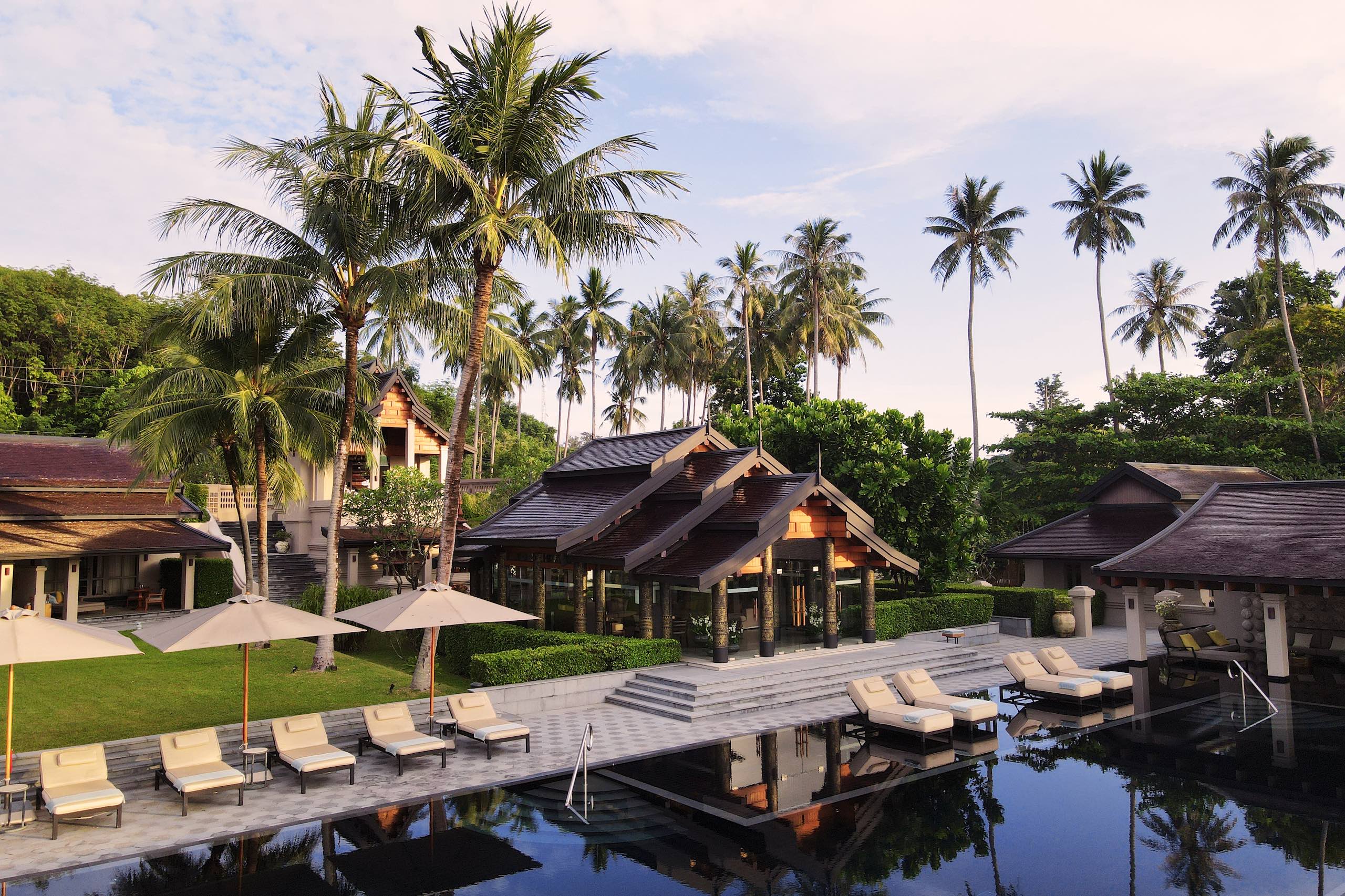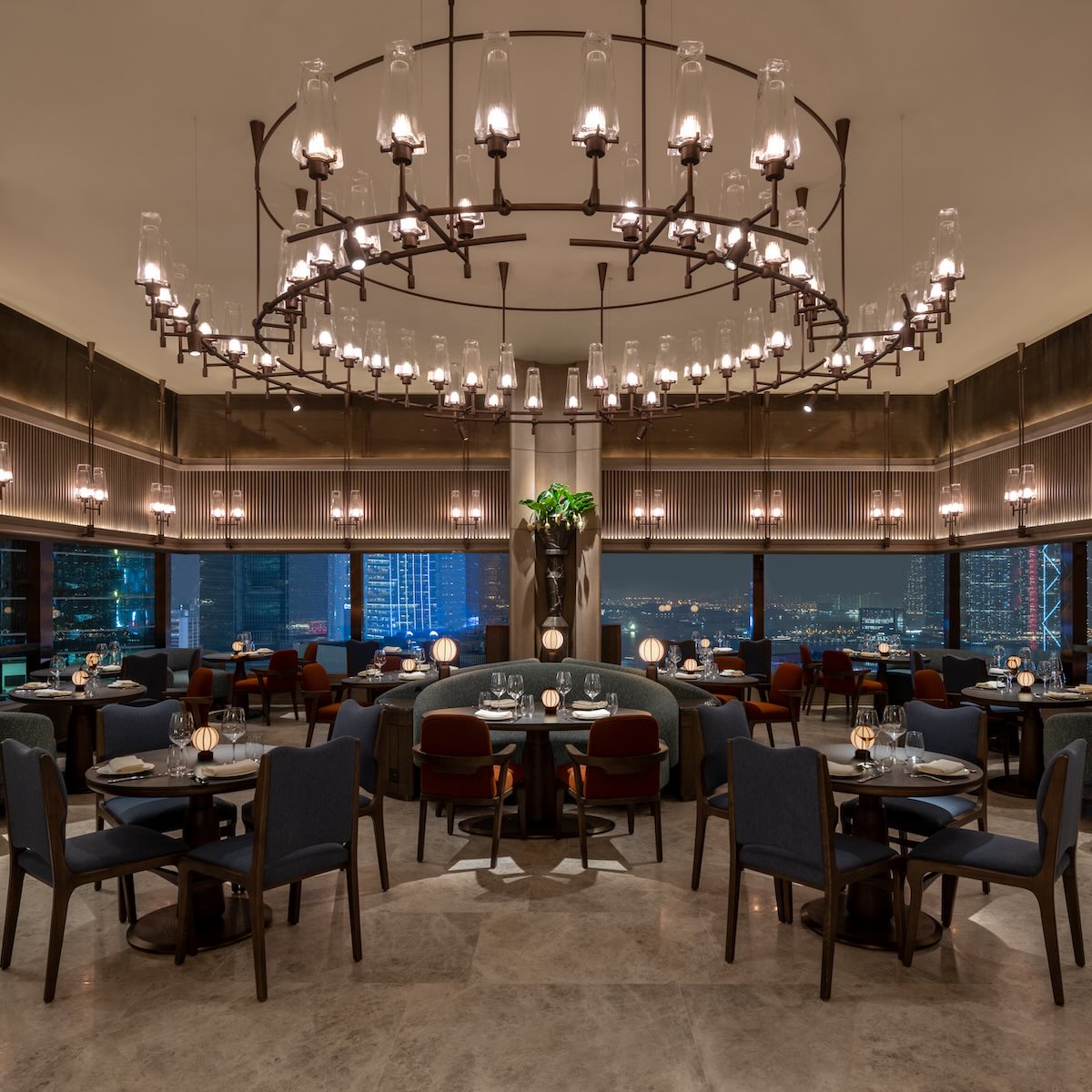I am standing on a dock somewhere in the ocean off Thailand’s Koh Yao Noi. I’ve got a (non-poisonous) pufferfish cupped between my palms, and it’s spewing a jet stream of water out of its mouth while slowly deflating in size, becoming much less… spherical. No less slimy. As I crouch, out it slips from my embrace, splashing neatly back into its natural habitat.
Now, that’s luxury.
The privilege of holding said marine animal comes courtesy of Àni Private Resorts, a hybrid hospitality concept that’s part Airbnb, part luxury resort, part Club Med—imagine eight villas that form a beachfront property that takes only a single booking at any time, all-inclusive of food and activities. It’s one of the more exceptional travel experiences one can have in life, particularly given that those who can afford a stay at the villas—which start at nearly HK$110,000 (US$14,000) a night, minimum stay five nights—are no doubt used to such exceptional travel experiences.
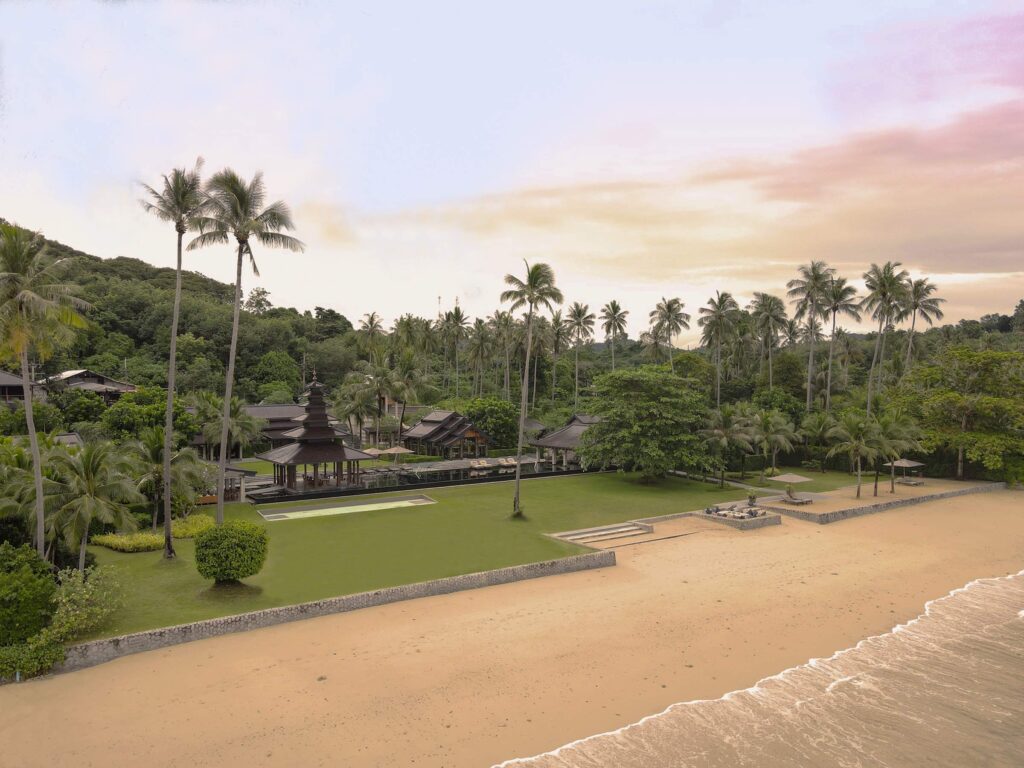
Àni isn’t new—its portfolio boasts four properties, with the others in Anguilla, the Dominican Republic and Sri Lanka—but as a brand, it’s not terribly well-known, having previously been more restricted to those in the know.
And what a great secret it is we’ve stumbled upon. There is grandeur without affectation, attention to detail without obsequiousness—it’s that barefoot luxury that many larger hospitality brands aspire to, without genuinely achieving.
Despite all villas clocking in at around 1,000 square feet in size, plus or minus, they are homey and livable—at least, I don’t feel my normal compulsion to clean my room before the cleaners come in. If five nights seems prescriptive and lengthy, it’s not—my stay at Àni Thailand lasts just three evenings and I lament how little time there is for me to enjoy the homemade dried mangoes and tom-yum-flavoured roasted cashews while soaking in the sizeable tub with its ocean-facing views.


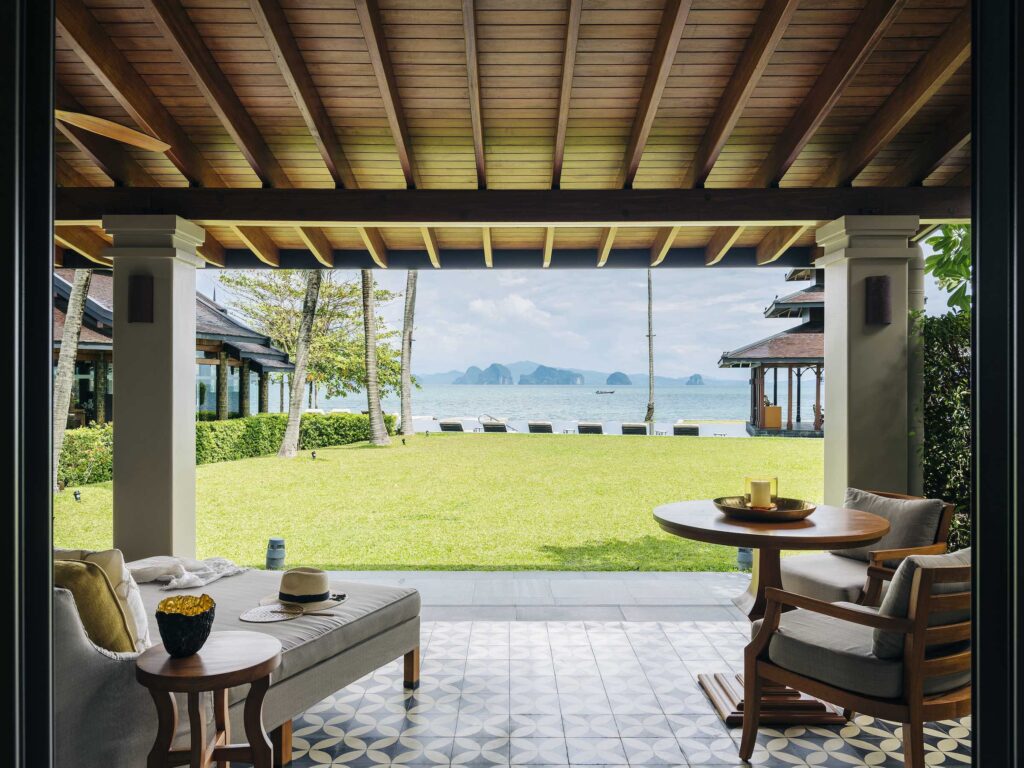

That’s because Àni kept us quite busy, gallivanting between superlative dining experiences and massages and arts and crafts and yoga and this and that and everything in-between. The aforementioned pufferfish affair is part of a guided island tour that takes place early in the itinerary, and is undoubtedly the least thrilling. Prior to visiting this fish farm, which houses all sorts of underwater creatures—some for eating, others for entertainment value—we’ve learned how to score a tree trunk for rubber sap, checked out some local-artisan-made wares, and paid homage to Yao Noi’s sole 7-Eleven outlet. We pass a stall peddling roti pancakes stuffed with banana and other sugary spreads, but are chastened before we can indulge.
Why? Because it’s very important that we do not ruin our appetites for dinner. It’s actually shocking how many completely unique meals we can have in one venue. On our first day, we are treated to a Mediterranean lunch while seated actually in the very shallow end of the swimming pool. As night falls, we are escorted into an indoor sala, where Thai dancers from a local school perform traditional dance, and then we find a street-food-style buffet has been set up, with, it seems, more chefs than diners—eight of us meander through stations for khao soi, pad thai, papaya salad, dumplings, and, of course, the roti we’ve been craving for the last, oh, three hours or so.
Some of our subsequent meals are also held in what I come to know as the “super transforming sala.” This glass-walled structure is our function room-cum-dining hall, playing venue to the likes of batik painting lessons, singing bowl sessions, and lavish dinners, with but an hour or two’s break in-between each metamorphosis.

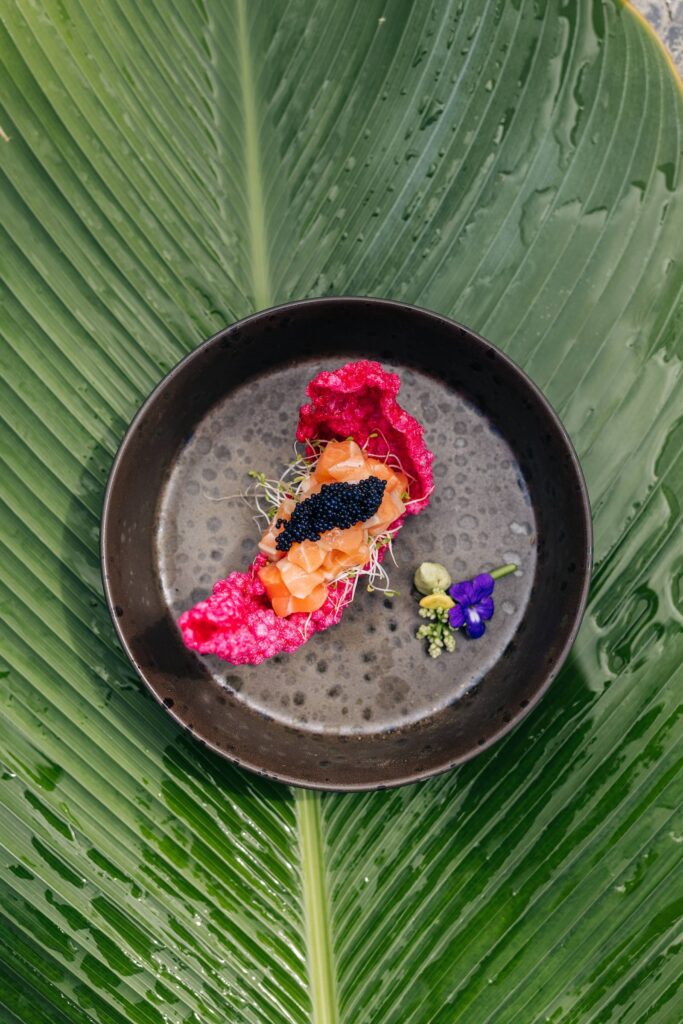
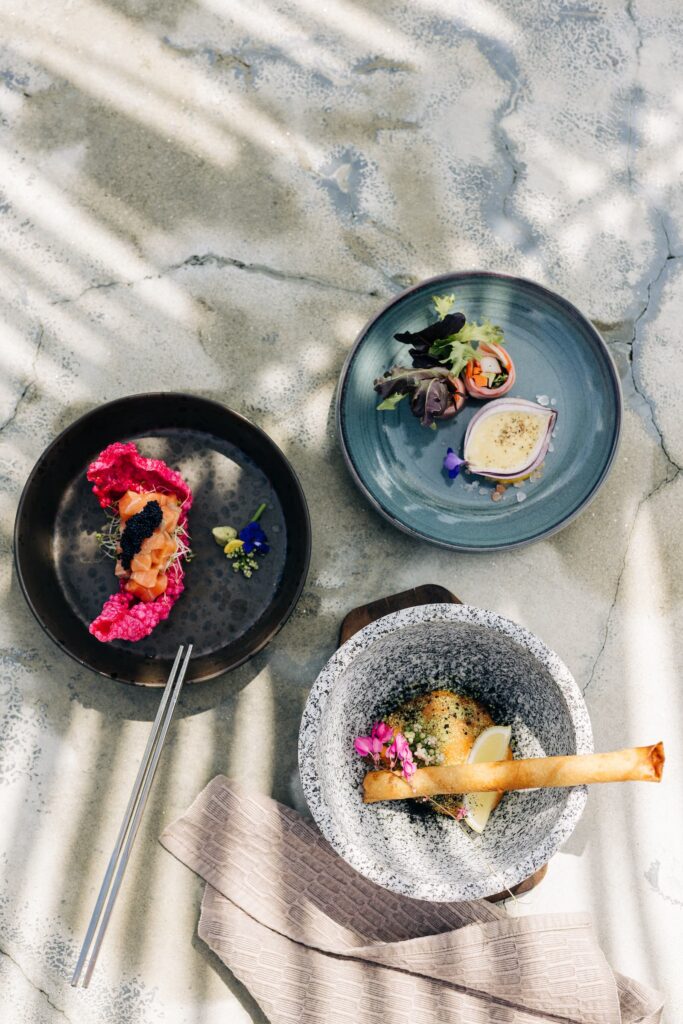
The staff also silently, seamlessly build external settings for us—not just in the adjacent outdoor sala, but right on the beach, where a makeshift dining set-up is fit for a wedding party. On another day, we are huffing and puffing on the grass during a Muay Thai lesson as the Àni team plans a covert escape to a nearby island. One longtail boat ride later, we dock at the pristine beach of an untouched island in Phang Nga Bay, and a three-course fine-dining lunch is served at the foot of a limestone cliff, complete with tablecloths and individual tanning stations under individual umbrellas that dot the shoreline. After dessert, we set sail in search of swimming monkeys, who come a little too close in their quest for bites of banana, but thrill us with their proximity and agility.
I’m not sure if this laundry list of personalised itineraries and inclusions is too different from any other luxury resort’s, but yet perhaps the magic of Àni isn’t in the nuts and bolts and quantifiable hospitality metrics. Resorts in Thailand are certainly a dime a dozen, and yet in a group of travellers used to being spoilt by luxury and hospitality brands, there’s something of an agreement that what we are experiencing isn’t your run-of-the-mill resort rundown (even if that rundown includes, literally, 10 massages a day as part of your basic group package).
On the morning of our final full day at Àni, we are treated to a small surprise—eight sidecars await us at the front gate to chauffeur us to rice paddy fields. We make quite the scene, Mario Kart-ing across Koh Yao Noi to a little hut, where we eat fresh-made rice noodles and make flower garlands. Frankly, the whole thing is adorable. Very intimate, very special, very unique… very Àni.
From there, we zoom, zoom to Àni Art Academy. Here, a little more of that Àni magic is unveiled. Àni was founded by Tim Reynolds, the founder of a global trading firm and, as a result of a car accident over two decades ago, a paraplegic who subsequently turned to art as a form of therapy and healing. He then launched Àni Art Academies, providing free-to-all art education in the specific domain of hyperrealism. The catch, if you can call it that, is that students need to commit to some 30 hours a week of intensive studio training, until they complete the programme—three years, give or take.

Given that Koh Yao Noi is a rather far-flung destination for the average art student, and that few of the island’s 6,000 local residents can afford to give up their day jobs in pursuit of this dream, enrolment at this campus isn’t bursting at the seams. The day we visit, you can count the number of budding artists on-site on one hand, and we are all duly impressed by their efforts, including those of a 70-something-year-old retiree who’s decided to spend his autumn years dedicated to drawing. He’s colouring in what seems like the 100th version of a square that’s got a gradient fading from white to black – we’re told that’s what most students do for basically the first six months. And yet, once they get the hang of it, a whole world opens up—in the form of opportunities, gallery shows, and more. Visitors from Àni Private Resorts are asked not to donate to the cause, but to commission works from graduates, and the resulting canvases become treasured mementos.
Our hearts are certainly feeling warm and fuzzy when we leave, but unfortunately, our clothes are soon a little wet and soggy, thanks to a thunderstorm that threatens to derail our final stop on the agenda: a sunset cruise. To our credit, no one is bothered by this news—the good vibes are flowing and we’ve been so thoroughly entertained and spoiled that kicking back at the resort bar instead is hardly a tragedy by any means.

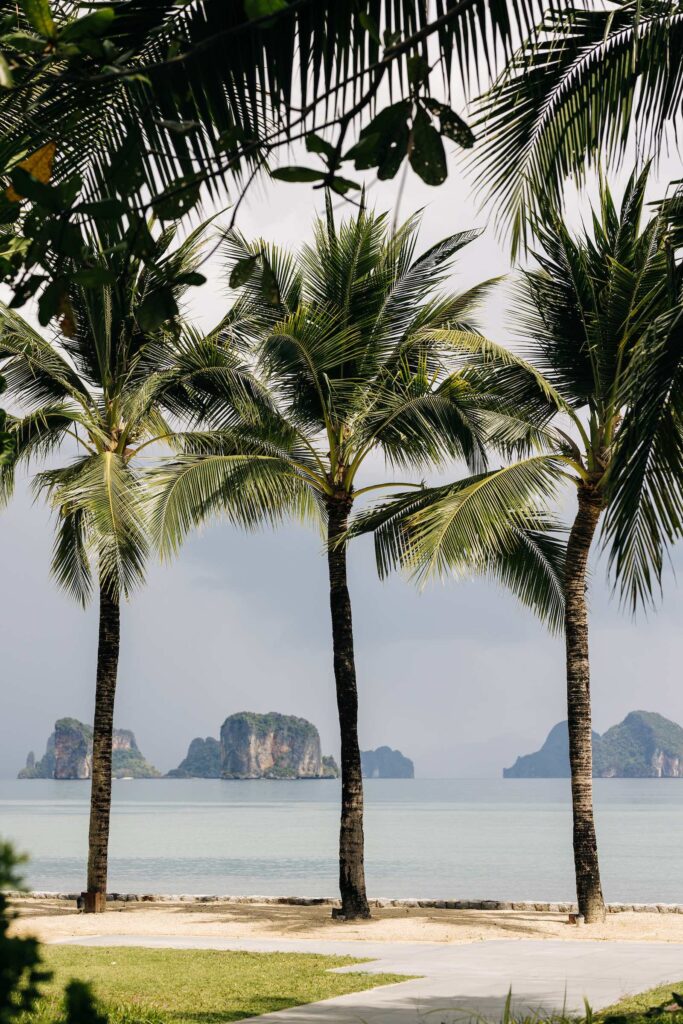
But of course, the Àni team pulls through. We meet as scheduled but instead of heading seaward for the boat, we traipse inland. We literally cross the street and—surprise!—reach our final destination, a local bar that’s more kitsch than cool, with a facade that’s shaped like a longtail boat. We get our sunset cruise after all.
Menus are handed out, and we order blue cocktails and fruit shakes that—I notice out of the corner of my eye—the Àni mixologist makes, while Àni wet towels and canapés are presented. In some 30 minutes, the resort team has engineered an entire takeover of the neighbourhood bar. We may be sitting on unfluffed cushions, swatting away rain-crazed mosquitos, but we’ll do it Àni-style—and indeed, before any telltale red bumps have formed on our skin, a tray of Àni bug spray appears. Like magic.
The team is highly apologetic that they haven’t been able to coax the weather gods into giving us a sky more suitable for our last evening, but we are arguably more pleased by plan B than the original itinerary. Happy hour bleeds into dinner which (despite our plans to retire early in preparation for tomorrow’s departure) bleeds into more drinks. Before we know it, morning has broken and our luggage is being whisked away, our selves to follow.
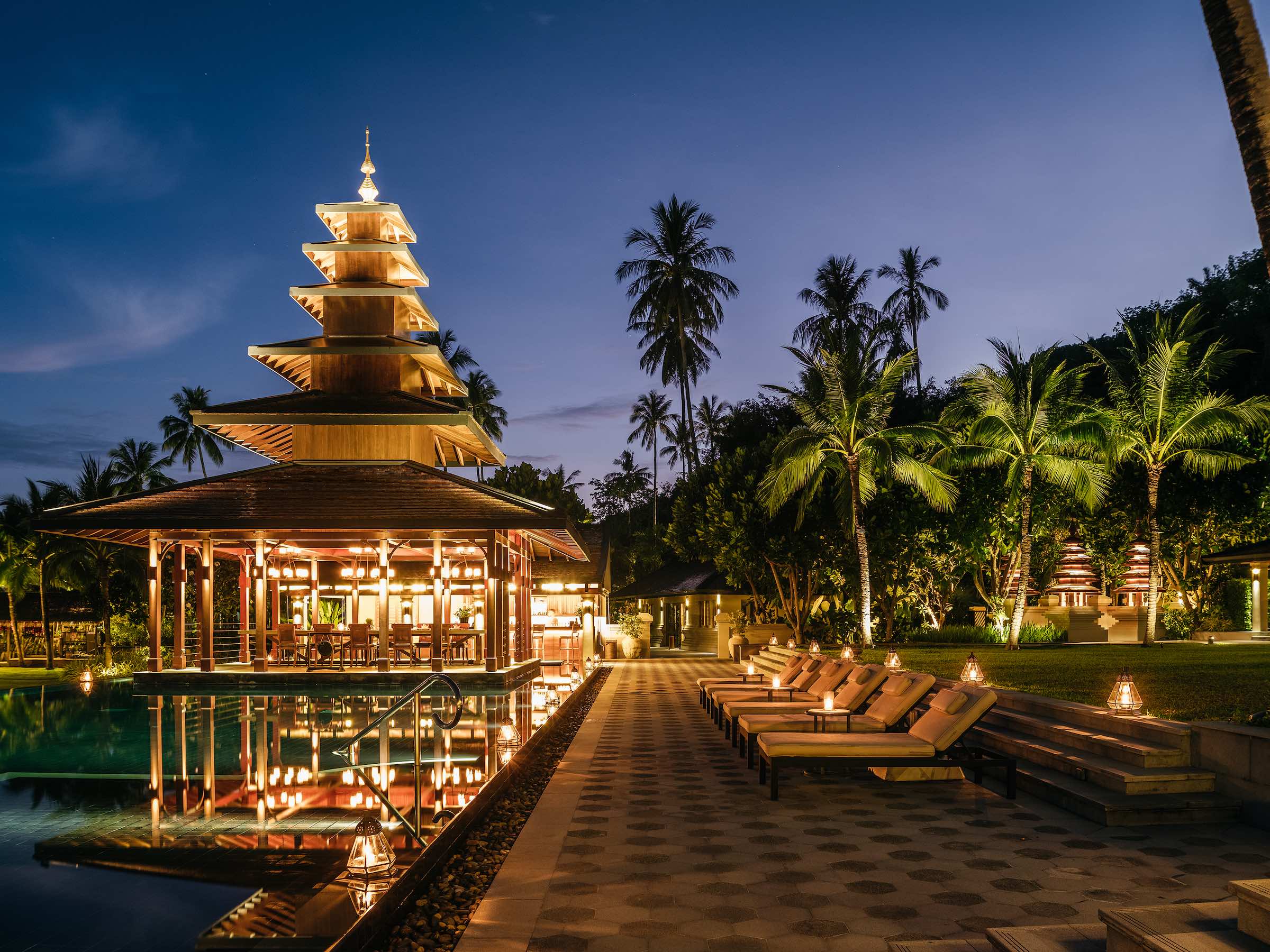

Our group, all previously strangers to one another, feel unusually bonded, as if an act of cosmic matchmaking put us harmoniously together in one private resort. This holiday, whether by design or happenstance, felt different. I can’t say that it was entirely engineered by the team, but certainly it was enhanced, perhaps by the deliberate element of surprise (“Where are we going?” “You’ll see…” was a frequent refrain). Or by the service, always at a high level, but never stuffy or intrusive, and always with an air of friendly familiarity—certainly thanks to general manager Andrew Gianfranco-Cotel, who embodies this vibe entirely. Or by the experiences, a mix of everyday and extraordinary, but always with finesse, and always presented with absolute joy and authenticity, whether it’s a fisherman showing us his prize lobsters or a sound bowl healer sharing some great wisdom from above.
To be honest, it’s not something that can necessarily be quantified in words or photos, but that’s true of all magic. It simply is. But if HK$110,000 is the starting price for magic these days, I say it’s a steal.
All images courtesy of Àni Thailand and Petrie PR.





